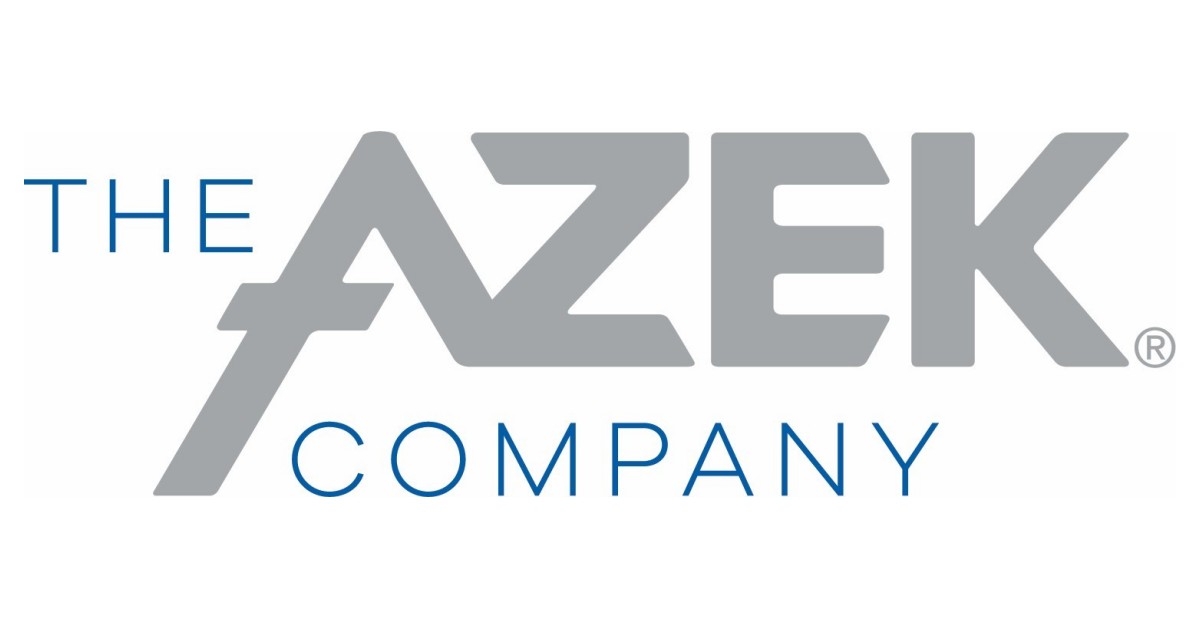Get in Touch
Thank you for your interest in working with Return Polymers. Please take a moment to complete the form and we will get in touch with you soon.
Azek decking gets greener.
By Catherine Kavanaugh Plastics News Staff
Chicago-based Azek Co. lnc.'s efforts to use more recycled PVC in its decking products is helping the vinyl industry meet goals to keep products made of the widely used plastic out of landfills.
While 85 percent of pre-consumer and industrial PVC, such as manufacturing scraps, rejects and trimmings, is recycled in the U.S. and Canada, only 14 percent of post-consumer PVC goods, such as vinyl floors, siding and roofing membranes, gets recycled.
A lack of end markets, limited recycling infrastructure and poor collection logistics all contribute to a high landfill rate for the world's third-most popular plastic in the U.S. and Canada.
To tackle the problem, the Vinyl Institute, a Washington-based trade association, and its Vinyl Sustainability Council are making landfill diversion a priority. The groups have set a modest goal to increase post-consumer PVC recycling by 10 percent over the 2016 rate, which was 100 million pounds, by 2025.
To that end, the council is looking for ways to improve collection of post-consumer PVC products, possibly by building up volumes at transfer stations for trucks that haul 40,000-pound loads; calling on product manufacturers to increase recycled PVC content; and asking investors and grant providers to expand mechanical recycling infrastructure for sorting, washing, shredding and pulverizing.
As an industry, we have made tremendous strides in PVC recycling with more than 1.1 billion pounds recycled annually. We recognize the feasibility and cost effectiveness of post-industrial recycling, but much more needs to be done on the post-consumer side," Jay Thomas, executive director of the Vinyl Sustainability Council, said in a recent webinar.
Thomas was among the speakers at the council's Vinyl Recycling Summit webinar, which was posted online June 29.
Azek is helping lead the way for the vinyl industry with its $18. l million acquisition of Ashland, Ohio-based Return Polymers, a recycler and compounder of PVC. The deck maker is a good example of a company finding success using recycled material, according to the council.
In fiscal year 2019, Azek used more than 290 million pounds of recycled materials in its deck boards, and company officials expect to increase the amount by more than 25 percent in fiscal year 2020, according to Azek's IPO prospectus.
Return Polymers enhances Azek's in-house recycling capabilities across its line of TimberTech Azek decking, Azek Exteriors trim, Versatex cellular PVC trim and Vycom sheet products.
With estimated sales of $515 million, Azek is the the No. 8 pipe, profile and tubing extruder in North America, according to Plastics News' new ranking.
Return Polymers is the 38th-largest recycler in North America, running 80 million pounds of PVC, according to other Plastics News ranking data. About 70 percent of that comes from post-industrial and 30 percent from post-consumer sources.
Return Polymers creates PVC polymer blends from 100 percent recycled sources similar to the way traditional compound manufacturers use raw materials. The business continues to sell to outside customers while also being a supply chain partner to its new owner Azek.
"We're committed to accelerating the use of recycled materials. That is the core of who we are and what we do," Ryan Hartz, Azek's vice president of sourcing, said during the webinar. "We leverage our science and R&D team to figure out how to use more recycled and sustainable products, in particular PVC and polyethylene as well."
To Azek, doing the right thing is using more recycled plastic, Hartz added, noting up to 80 percent of the material in its wood and PE composite TimberTech-brand decking lines is recycled, while 54 percent of its capped polymer decking is recycled PVC.
By comparison, Winchester, Va.-based Trex Co. Inc. says its decks are made from 95 percent re claimed wood and recycled PE film.
With $694 million in annual sales, Trex is North America's No. 6 pipe, profile and tubing producer, according to Plastic News rankings.
Trex also says a lack of efficient collection processes prevents its used decking products from being recycled at the end of their lifespan.
"As composite use becomes more widespread and collection programs are developed, Trex will make all efforts to advance these programs," Trex says in its sustainability report.
At Azek, Hartz said end-of-service-life issues related to decking are on the front burner.
"The majority of our products are recyclable at the end of their useful lives, and we're currently investigating all options that could potentially help us bring our recyling efforts lull circle," Hartz said.
Azek's three primary decking product lines are TimberTech Azek, which includes the capped PVC collections called Harvest, Arbor and Vintage; TimberTech Pro, which includes PE and wood composite decking called Terrain, Reserve and Legacy; and TimberTech Edge, which includes PE and wood composites called Prime, Prime+ and Premier.
Getting greener
Azek has been investing heavily in developing its recycling capabilities for several years. In 2018, the company spent $42.8 million on property and a plant and equipment to establish its PE recycling plant in Wilmington, Ohio. The facility, which opened in April 2019, turns used shampoo bottles, milk jugs, laundry detergent bottles and plastic wrap into a material that gets a second life as the core of TimberTech Pro and Edge decking.
In addition to diverting waste from landfills, Azek says use of recycled material substantially reduces material costs. For example, Azek says it saved $9 million on an annualized basis by using 100 percent recycled HDPE material instead of virgin material to produce the cores of Pro and Edge products.
"These investments, along with other recycling and substitution initiatives, have contributed to an approximately 15 percent reduction in our per-pound capped composite decking core costs and an approximately 12 percent reduction in our per-pound PVC decking core costs, in each case from fiscal 2017 to fiscal 2019, and we believe we have an opportunity to achieve further cost reductions," the Azek IPO prospectus says.
The February 2020 acquisition of Return Polymers, a founding member of the Vinyl Sustainability Council, opens another door to those opportunities by expanding Azek's vertical manufacturing capabilities for PVC products.
Founded in 1994, Return Polymers offers PVC recycling, material conversion, decontamination services, waste recovery and scrap management.
"It was a great fit. ... We have similar goals," David Foell said during the webinar. "We both want to recycle and sustain the environment. We both want to increase the use of vinyl. It was a great partnership."
Return Polymers recycles a lot of building materials that are first-generation products at the end of their useful life that it gets from construction and demolition facilities, contractors and consumers. The business also recycles products such as washer and dryer components, garage doors, bottles and enclosures, tile, cooling tower media, credit cards, docks and shower surrounds.
"The ability to get things in here from freight logistics is the key to making these things work," Foell said.
From a capability standpoint at Return Polymers, Foell said: "We are still using the easy stuff. We do windows, siding, pipe, fencing - the whole 9 yards - but also other things that people are throwing away in the landfill to day. We take a great deal of pride in finding ways and technology to use those things in primary products. We don't call it recycling. We call it upcycling because ... we're trying to find a finished product to put it into."
After the webinar, Foell told Plastics News that he does see a day when there is a decking take-back program for builders and homeowners.
"Return Polymers has already recycled OEM decking because of obsolescence, change in distribution management or field damage," Foell said. "Return Polymers has developed the logistics network and recycling systems to support these efforts. I'd imagine that post-project recycling will be required in the near future, but it will only occur if the entire decking distribution channel - contractor, distribution, OEM and recycler - participates."
End markets today
From apparel and building trim to packaging and windows, there are diverse end markets where post-consumer vinyl in either its rigid or flexible forms can find a home.
The top identifiable end markets currently include custom extrusion, 22 percent; vinyl compounding, 21 percent; lawn and garden, 19 percent; vinyl siding, soffit, trim, accessories, 18 percent; and large-diameter pipe and fittings greater than 4 inches, 15 percent.
That's according to a survey of 134 vinyl recyclers, brokers and finished product manufacturers conducted by Tarnell Co. LLC, a credit analysis and business information firm in Providence, R.I., focused on all North American resin processors.
Managing Director Stephen Tarnell said information was gathered on recycled material quantities, amounts purchased, sold and landfilled, reprocessing capabilities and markets served.
"Whenever material can go to a finished product, that's where it wants to go. That's where the margin is," Tarnell said during the Vinyl Recycling Summit.
However, another good option is a compounder, he added.
"Compounders will always buy it at a lower price than a finished product company, but they will buy a lot of it on a regular basis," Tarnell said.
Also, topping the list of notable end markets is a category called "other" that takes in 30 percent of recycled post-consumer PVC, but Tarnell said it is somewhat of a mystery.
"'Other' is something that should be spread around each of the categories, but the folks in the recycling marketplace ... want to identify their golden boy. They do not want to in many cases identify exactly where their material is going because it's a high-margin lock for them."
Post-consumer PVC also makes its way to end markets for tiles, custom molding, automotive and transportation, wires and cables, resilient flooring, carpet backing, doors, roofing, furniture and appliances.
Recycling more vinyl l
Until end markets are strengthened and increased, a lot of vinyl will continue to make its way to landfills.
Americans generated 194.1 billion pounds of household garbage in 201 7, according to the most recent municipal solid waste management report. Plastics made up 56.3 billion pounds, or 27.6 percent of the total, while the 1.9 billion pounds of landfilled PVC represented 1 percent of all materials and 3.6 percent of all plastics.
"That's quite an opportunity to begin to chip away at to recycle," according to Richard Krock, the Vinyl Institute's senior vice president of regulatory and technical affairs.
To seize the opportunity, the industry also has to solve logistical collection problems and get the right recycling infrastructure in place.
"That's why we set our goal at a 10 percent increase of post-consumer amounts," Krock said. "We want to start out modestly because we know it will be a challenge to recapture more materials in this fashion."
To reach its goal, the industry needs to recycle 10 million pounds more of vinyl annually in the next five years.
Part of the effort will likely entail working with transfer stations and construction and demolition recyclers to try to build lull truckload volumes of 40,000 pounds of used PVC products for truck drivers to haul.
Krock also said, "There are plenty of less-than-truckload volumes of 10,000 pounds and 20,000 pounds that are in warehouses or are at collection locations that they might not have the room to keep. Those are things we need to find an optimal way to transport to a center that might be able to process them and put them into products."
Recycling centers also will need upgrades for sortation, washing, grinding, shredding and pulverizing.
"We're trying to attract investors and grant providers," Krock said. "Several states have grant programs. .. . They manage and monitor landfills, and it's just as important for them to keep landfill volumes under check."
Thomas, the institute's sustainability council director, said he thinks the technical, logistical and investment hurdles to recycle more post-consumer PVC are within reach with the commitment of the industry.
"Significantly increasing post-consumer recycling will reduce the industry's carbon footprint, reduce the burden of the vinyl industry on the environment and improve the perception of vinyl in the market - all of which help ensure the future of the vinyl industry," he said.

![]()

Production Hours: 24/7
Shipping/Receiving by appointment only
Follow Us:
Website Accessibility
Terms and Conditions

